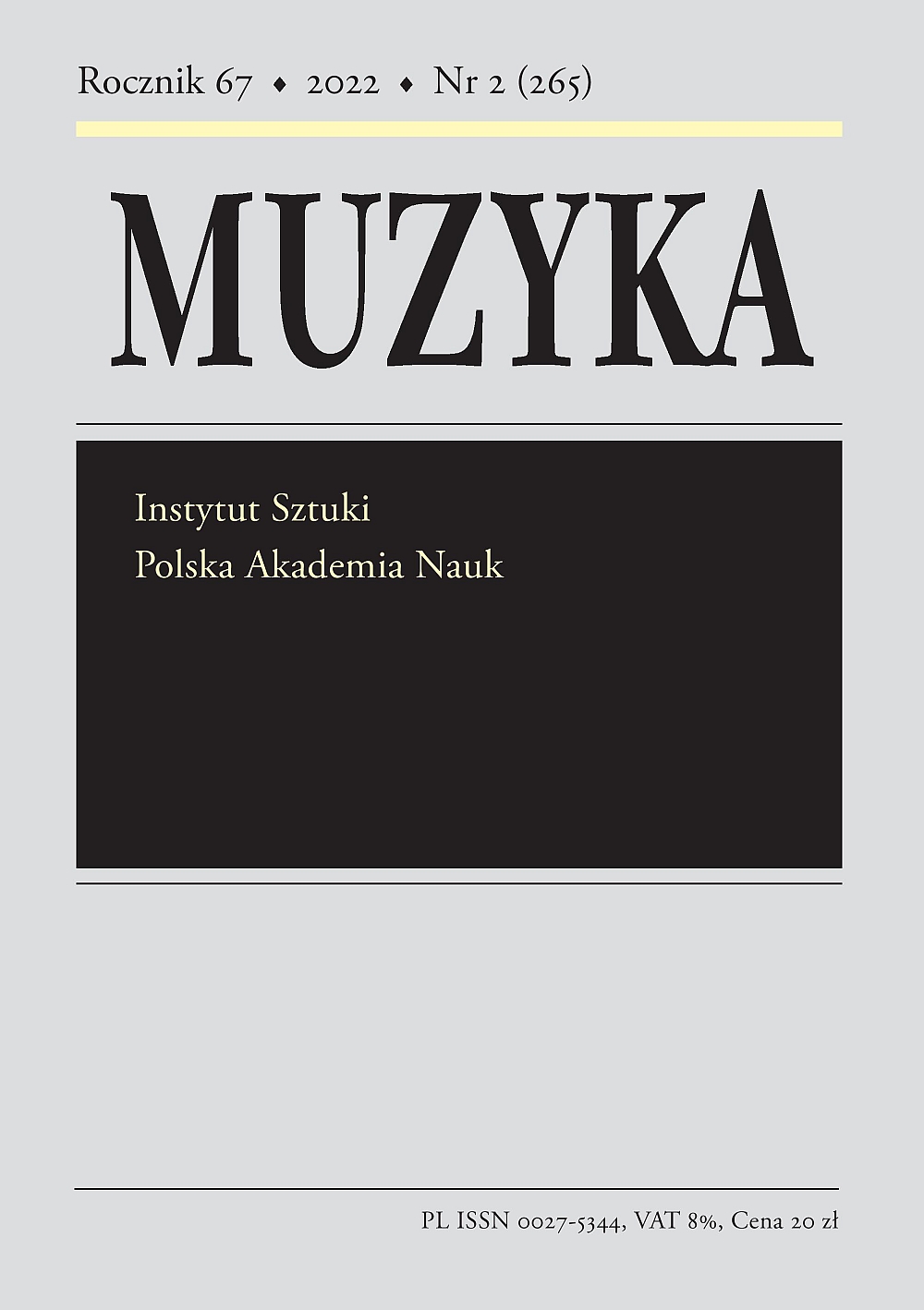„Miserere” na głosy i instrumenty Pawła Szymańskiego. Konstrukcja dźwiękowa i znaczenia
Paweł Szymański’s ‘Miserere’ for Voices and Instruments. Sound Structure and Meanings
Author(s): Violetta KostkaSubject(s): Music, Cognitive Psychology
Published by: Instytut Sztuki Polskiej Akademii Nauk
Keywords: Paweł Szymański; Miserere; intertextuality; concealed structure; transformations; meanings
Summary/Abstract: This article is devoted to Paweł Szymański’s 'Miserere' for voices and instruments (1993), with the aim of discussing its sound structure and the meanings attributed to it. Based on analysis of the work and a range of literature, the author claims that 'Miserere' is an openly intertextual work, composed freely without the application of algorithmic methods. It is characterised by the presence of two basic structures rather than one: modal Gregorian chant and four-part canon in extended major–minor tonality. These two basic structures were combined into a whole using abstract ideas typical of Szymański. One easily notes that while the solo psalmody assumes its centuries-old form, the choral parts, though colouristically resembling plainchant, consist not of monodic singing but of recitations on six pitches and whispered passages. If we compare the canon with the ultimate shape of the composition, it turns out that the former was used as the basis for ensemble sections, primarily the cello and vibraphone parts, but with many (around one third) of the canon’s notes left out. The discussion of the work’s structure ends with information about its tripartite form.The author opens the section on meanings by presenting her cognitivist stance that meanings are not intrinsic to the work, but rather the music provokes interpreters to create them. Based on her own associations, the opinions of music critics and psychology literature on emotions, the author argues that the three sections of 'Miserere' may be interpreted as corresponding to three emotions: balance, anxiety and balance regained. The article also contains the opening of the initial canon, which the author received from the composer, a fragment of Miserere arranged by the author and a table showing the work’s form.
Journal: Muzyka
- Issue Year: 67/2022
- Issue No: 2
- Page Range: 29-43
- Page Count: 15
- Language: Polish

